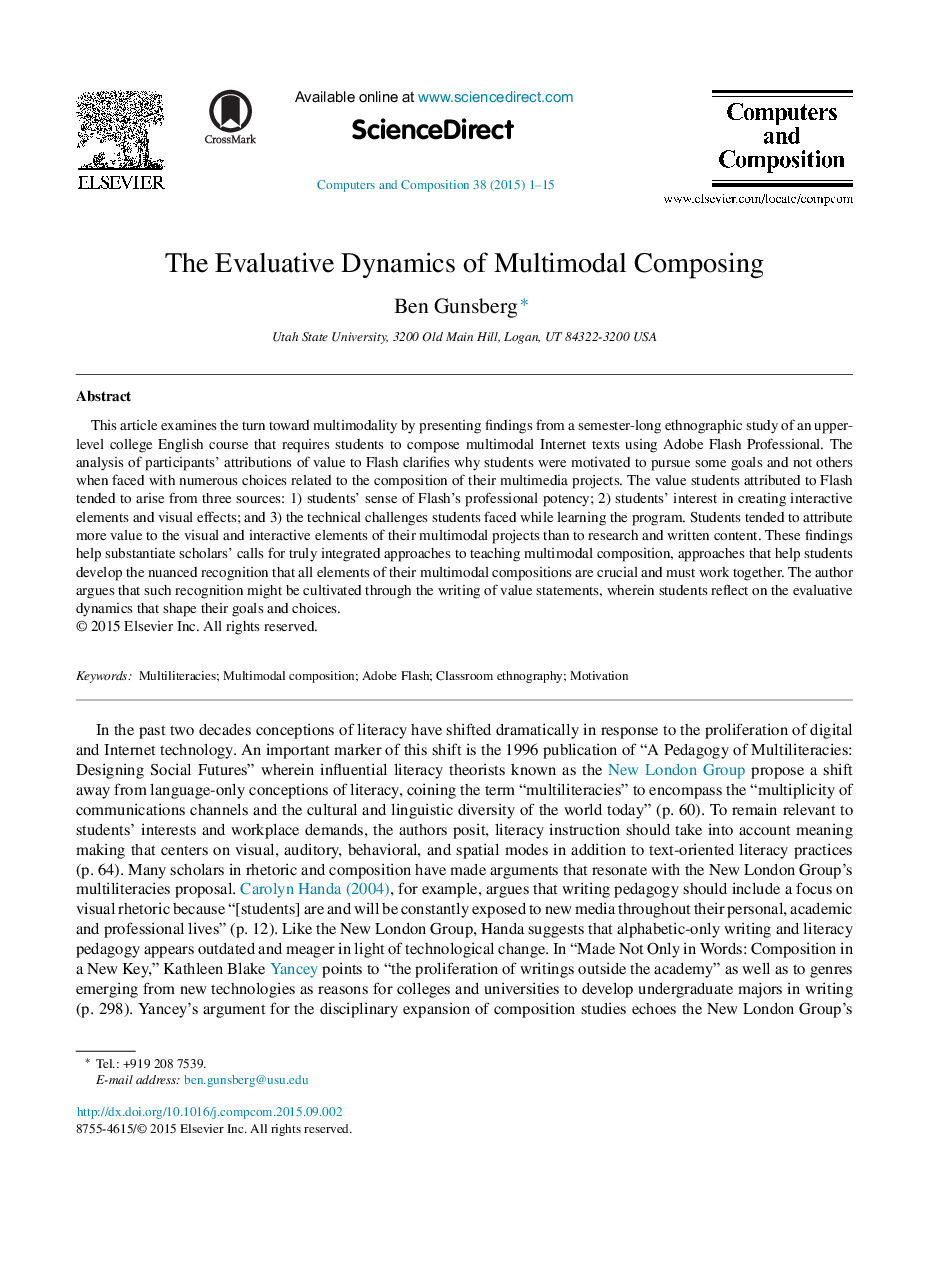| Article ID | Journal | Published Year | Pages | File Type |
|---|---|---|---|---|
| 347727 | Computers and Composition | 2015 | 15 Pages |
This article examines the turn toward multimodality by presenting findings from a semester-long ethnographic study of an upper-level college English course that requires students to compose multimodal Internet texts using Adobe Flash Professional. The analysis of participants’ attributions of value to Flash clarifies why students were motivated to pursue some goals and not others when faced with numerous choices related to the composition of their multimedia projects. The value students attributed to Flash tended to arise from three sources: 1) students’ sense of Flash's professional potency; 2) students’ interest in creating interactive elements and visual effects; and 3) the technical challenges students faced while learning the program. Students tended to attribute more value to the visual and interactive elements of their multimodal projects than to research and written content. These findings help substantiate scholars’ calls for truly integrated approaches to teaching multimodal composition, approaches that help students develop the nuanced recognition that all elements of their multimodal compositions are crucial and must work together. The author argues that such recognition might be cultivated through the writing of value statements, wherein students reflect on the evaluative dynamics that shape their goals and choices.
